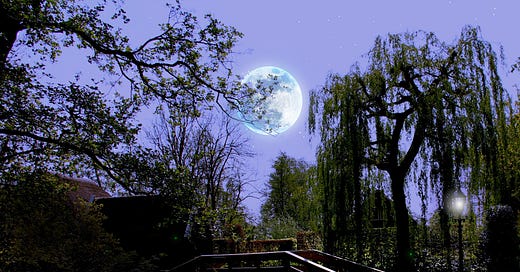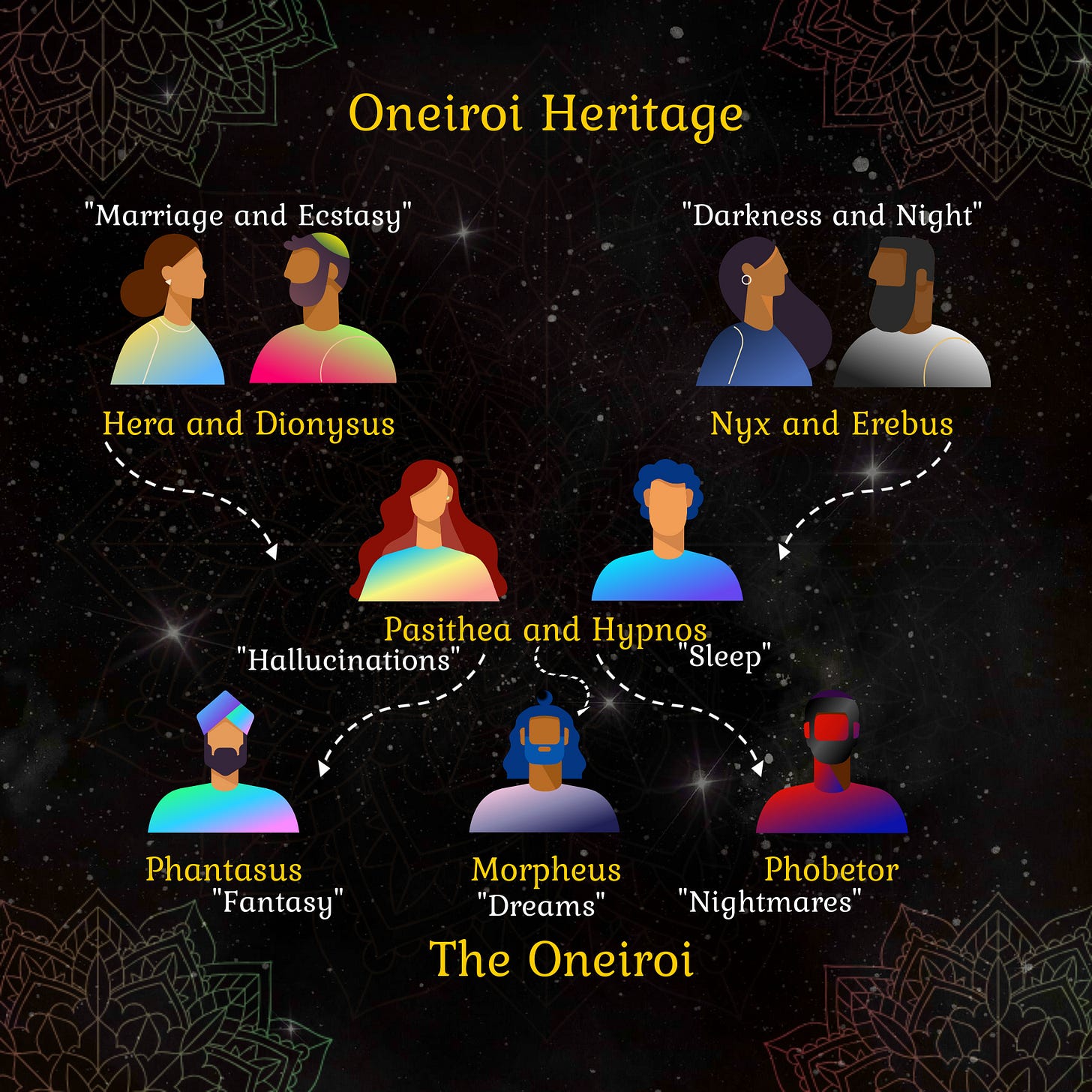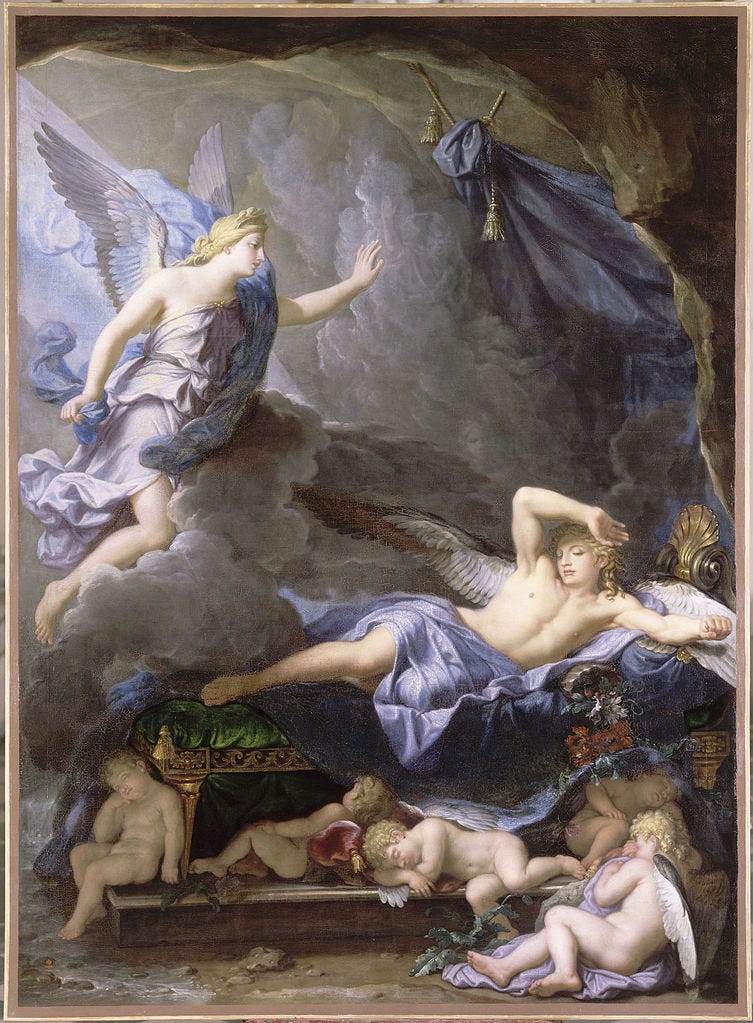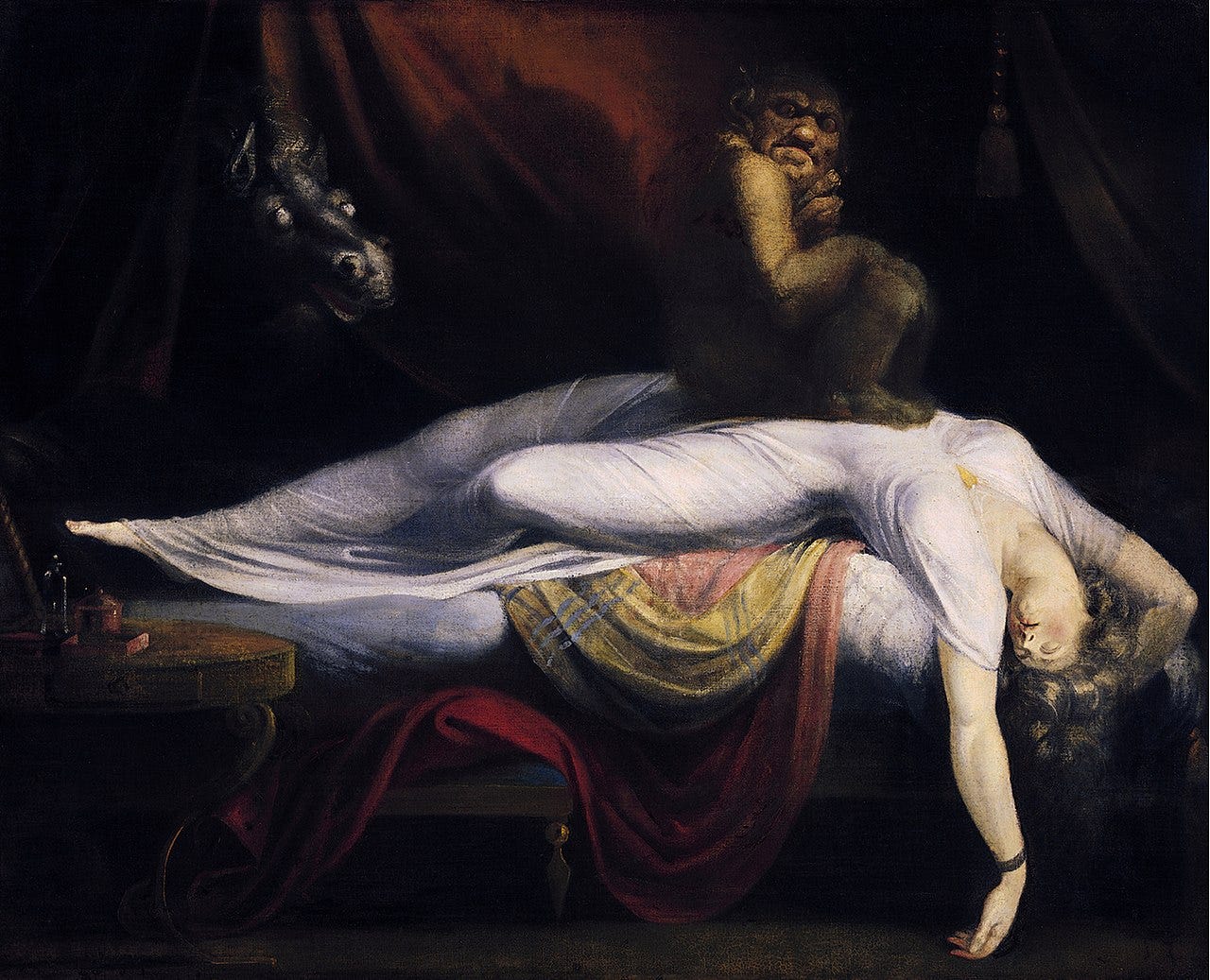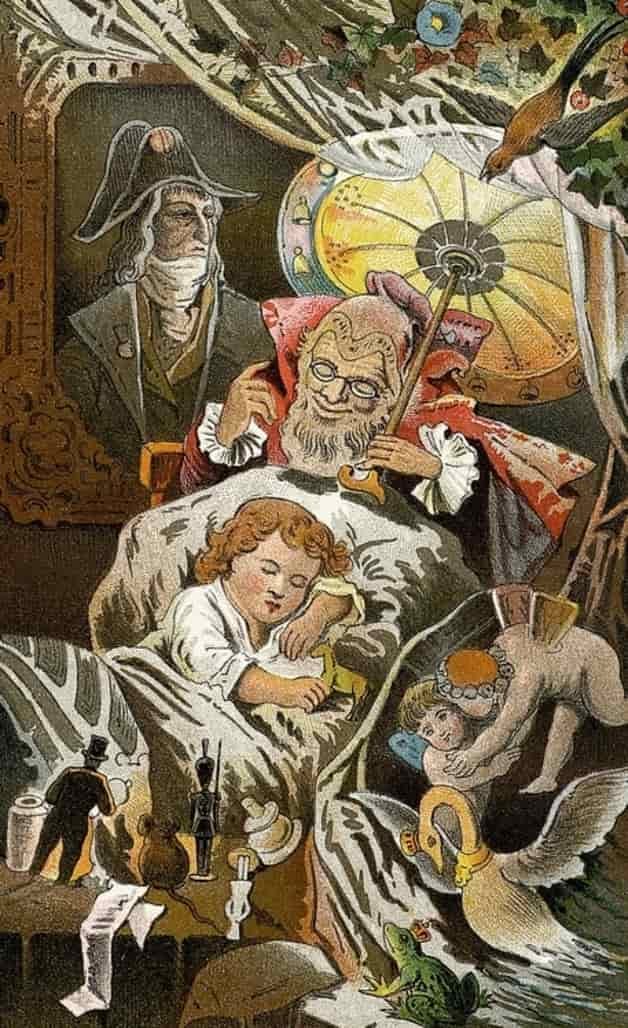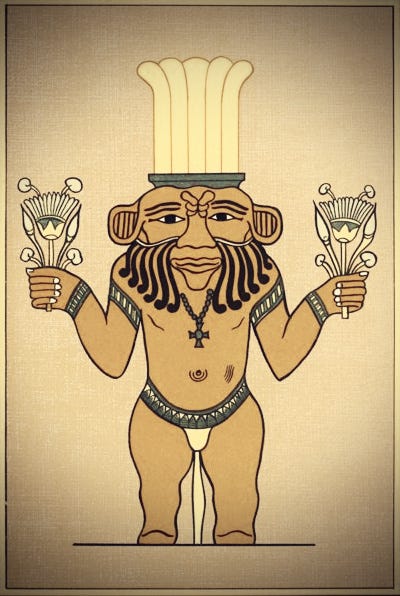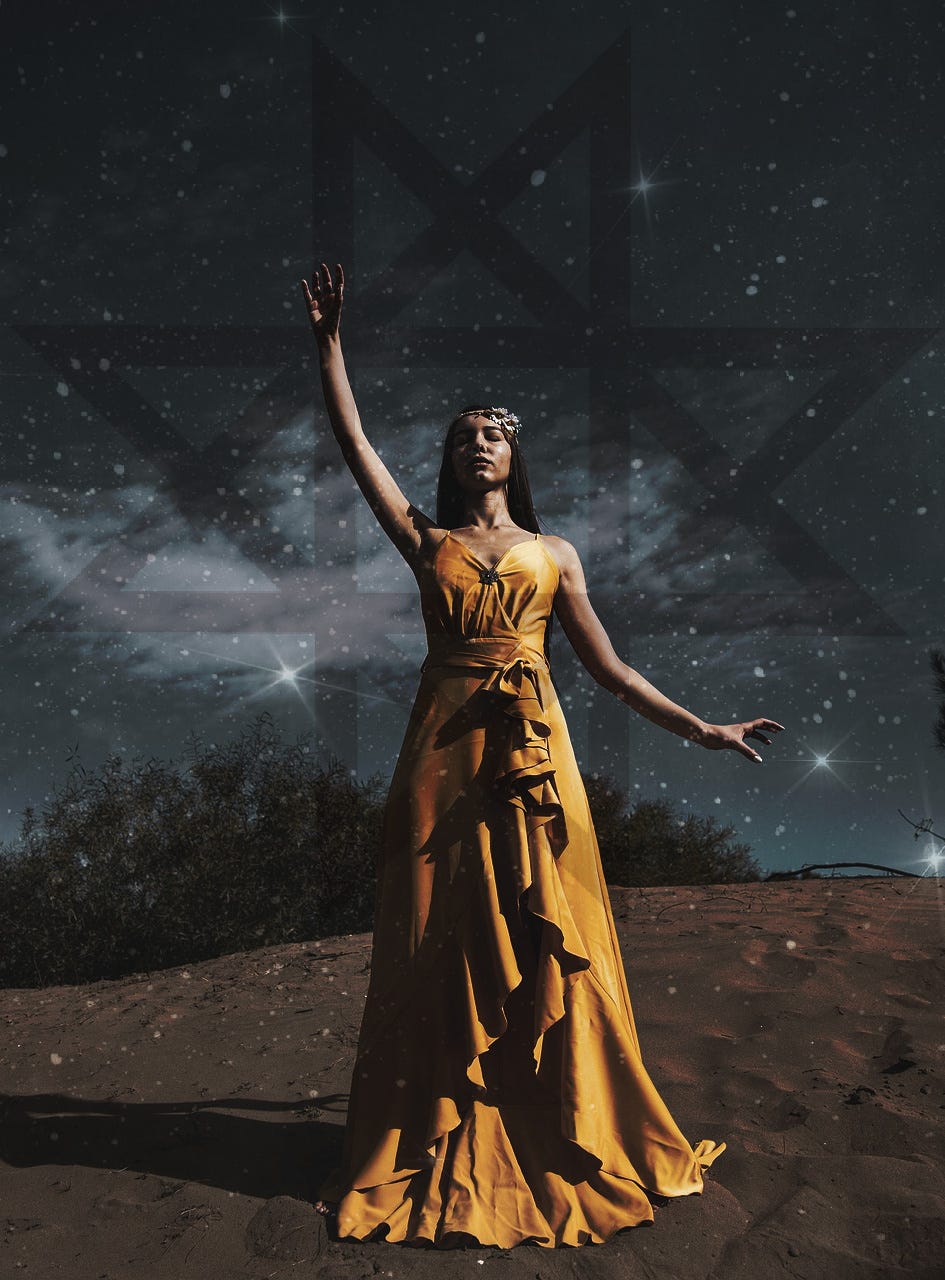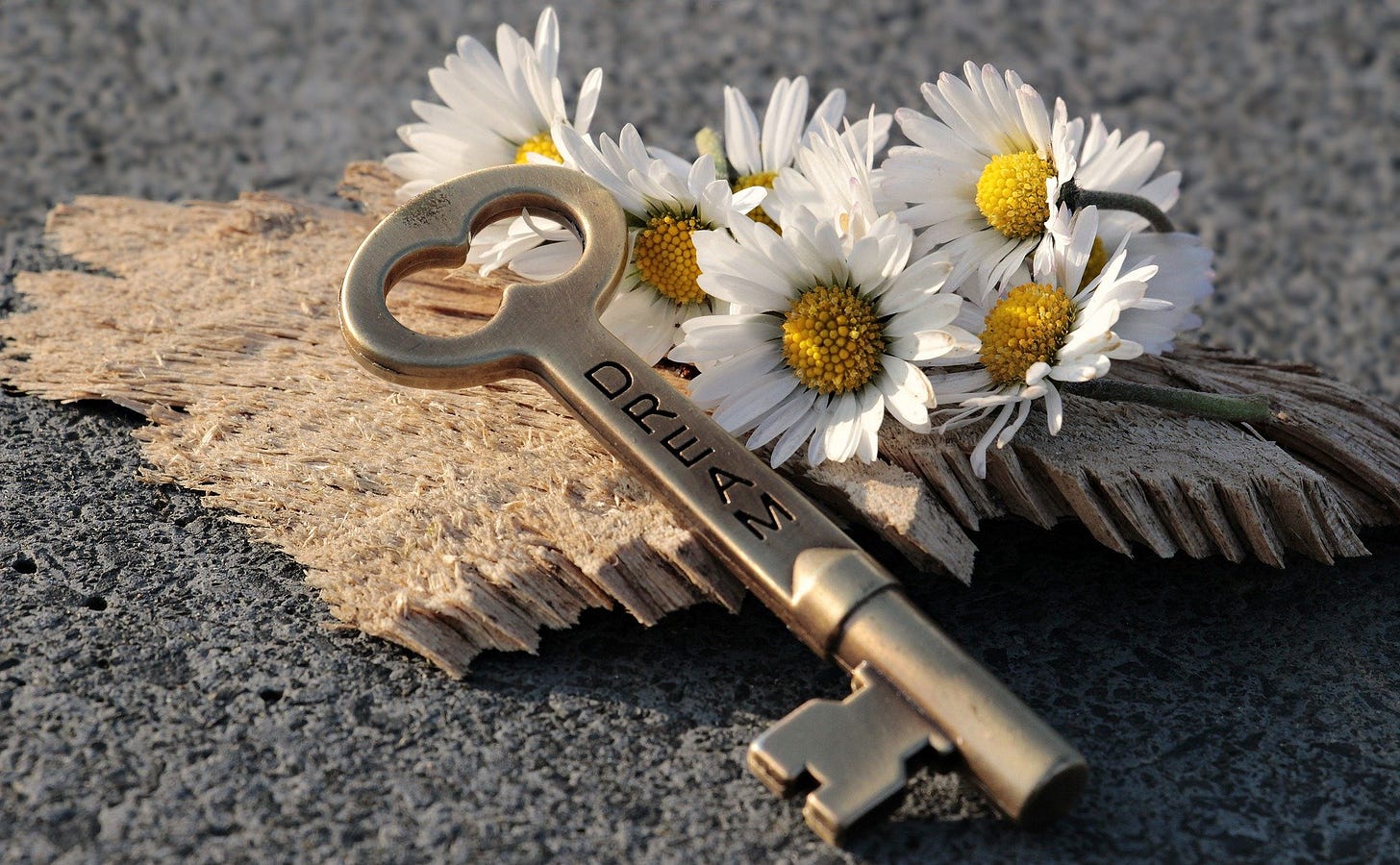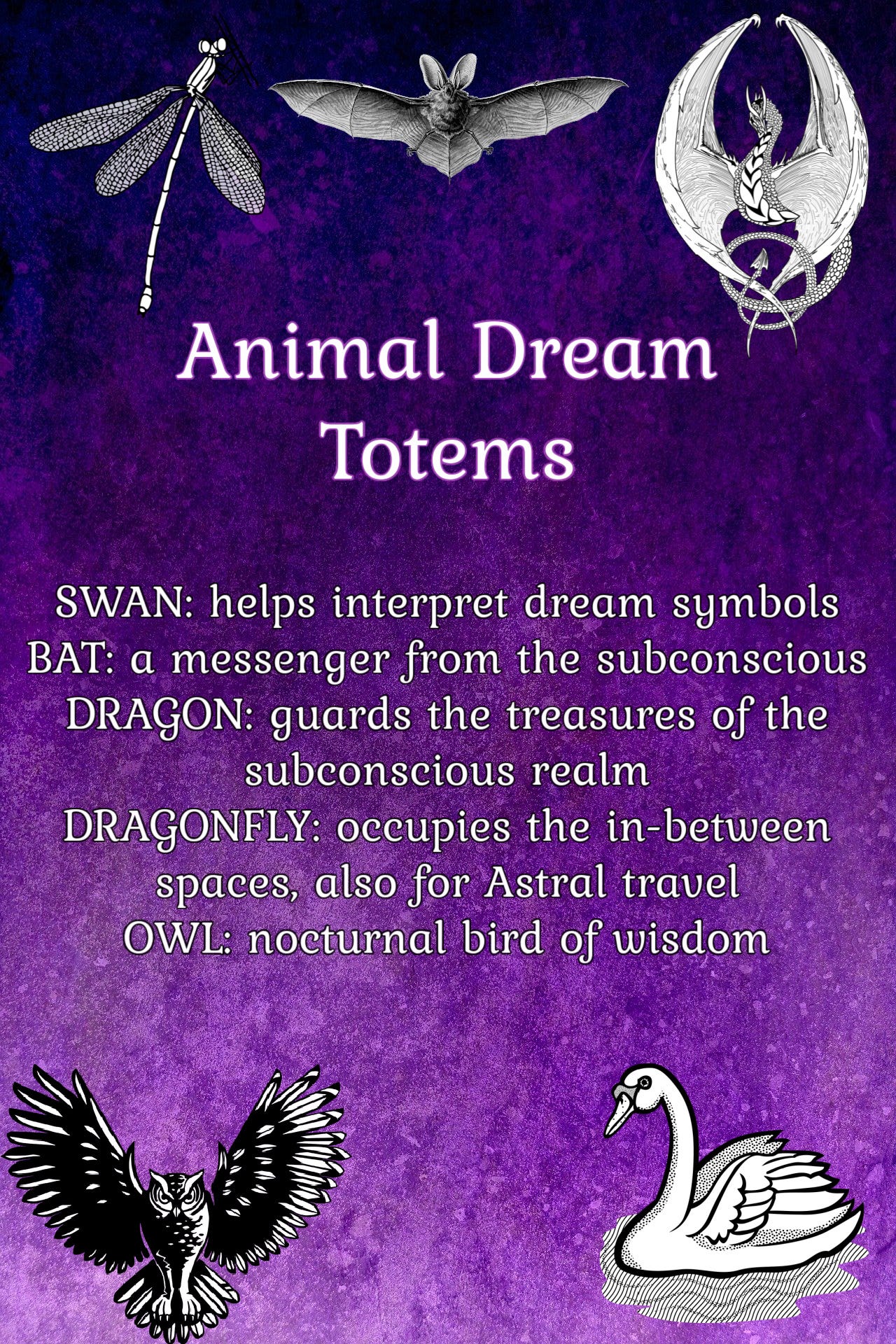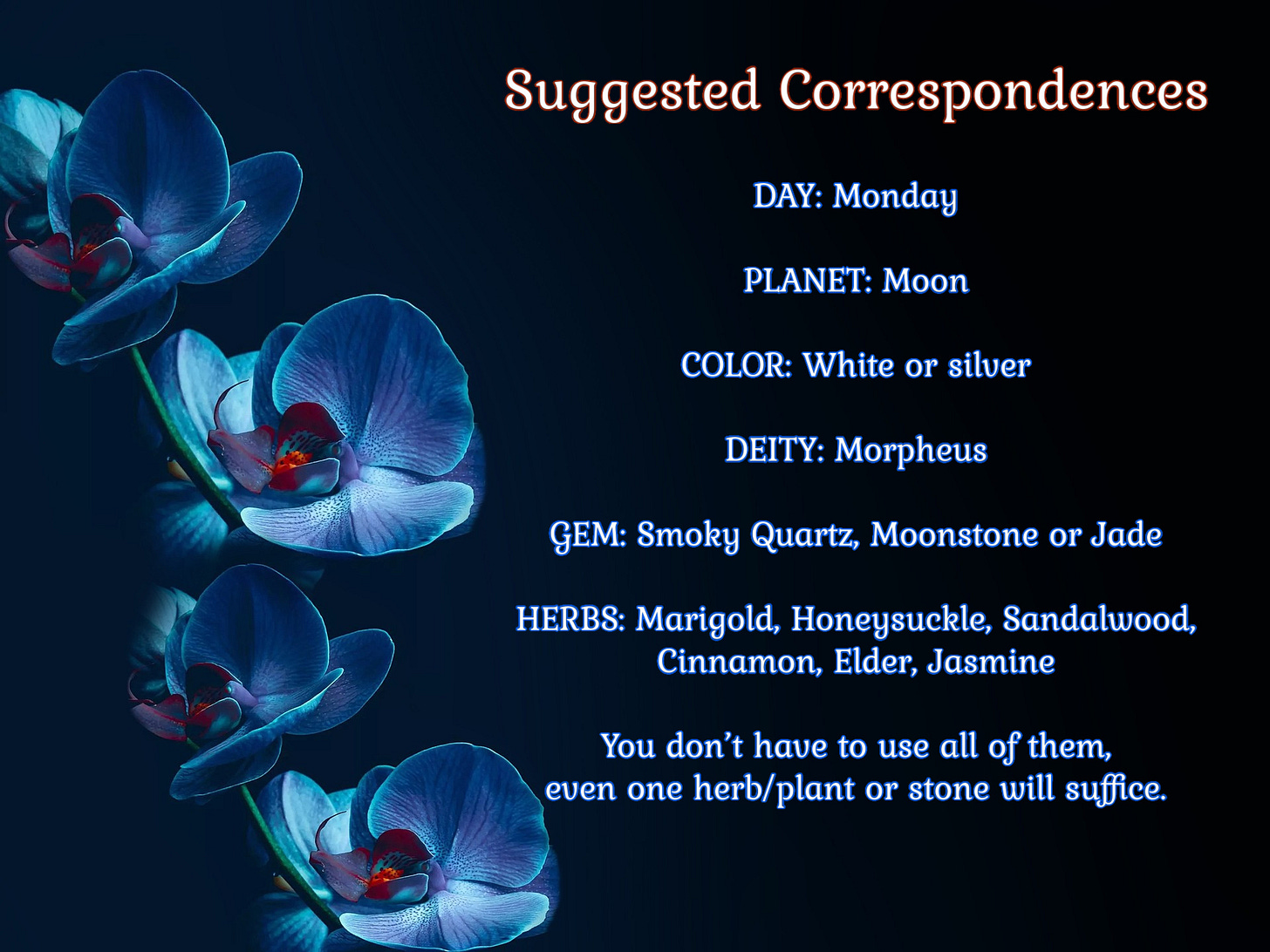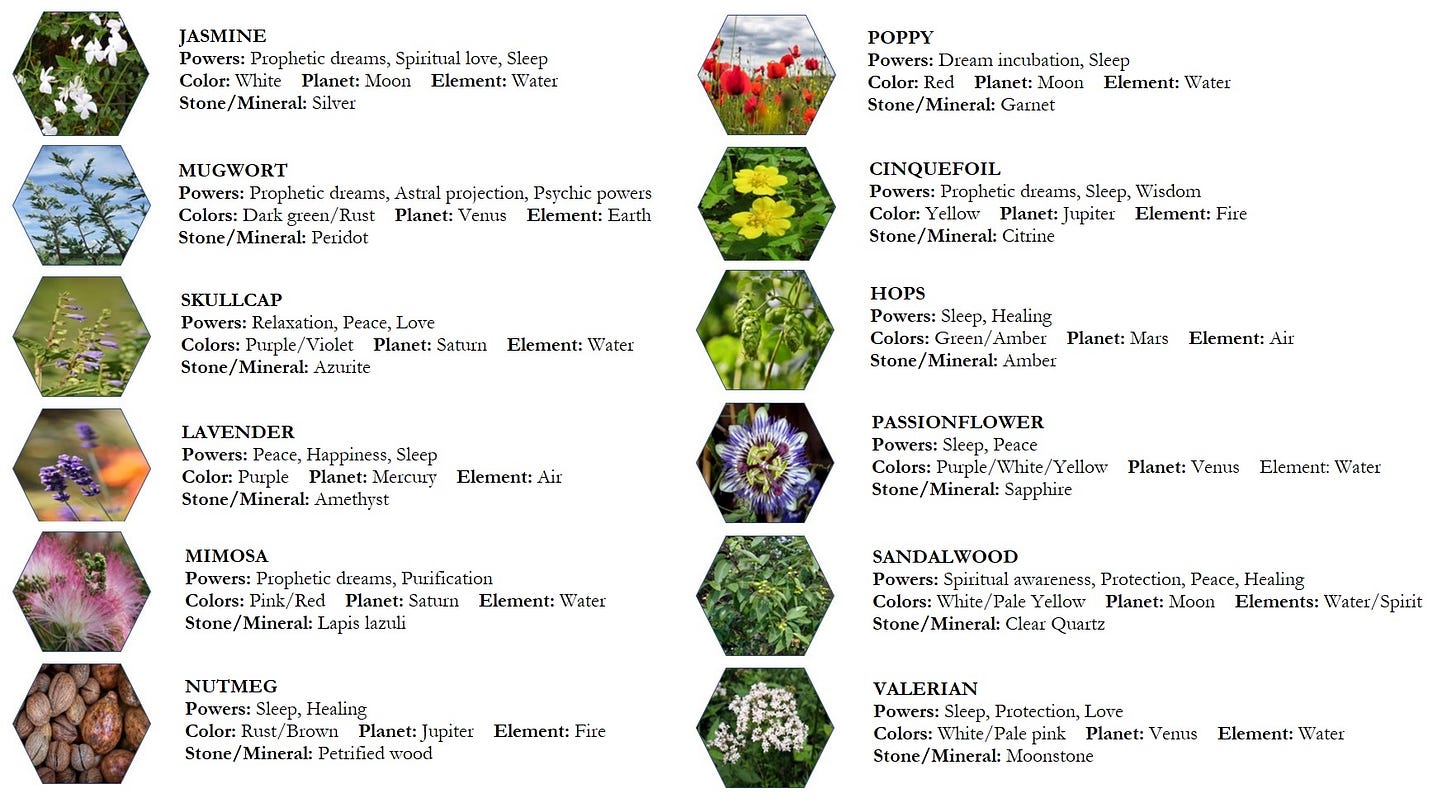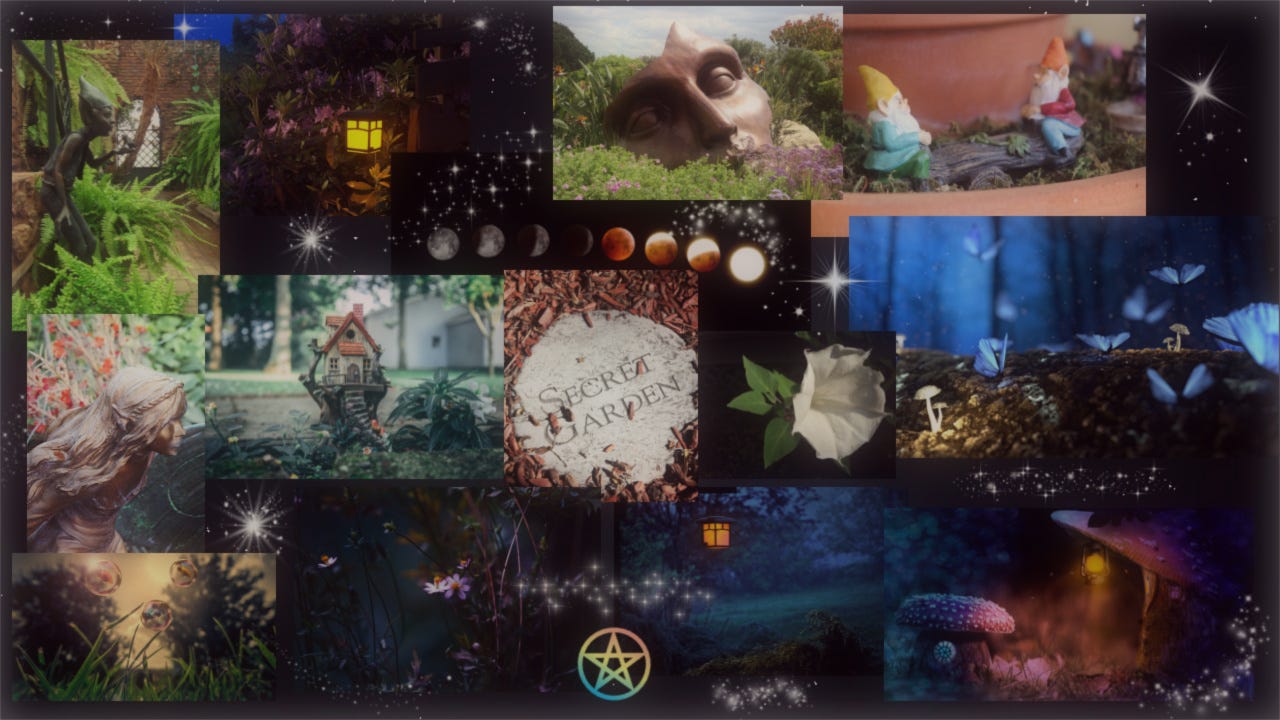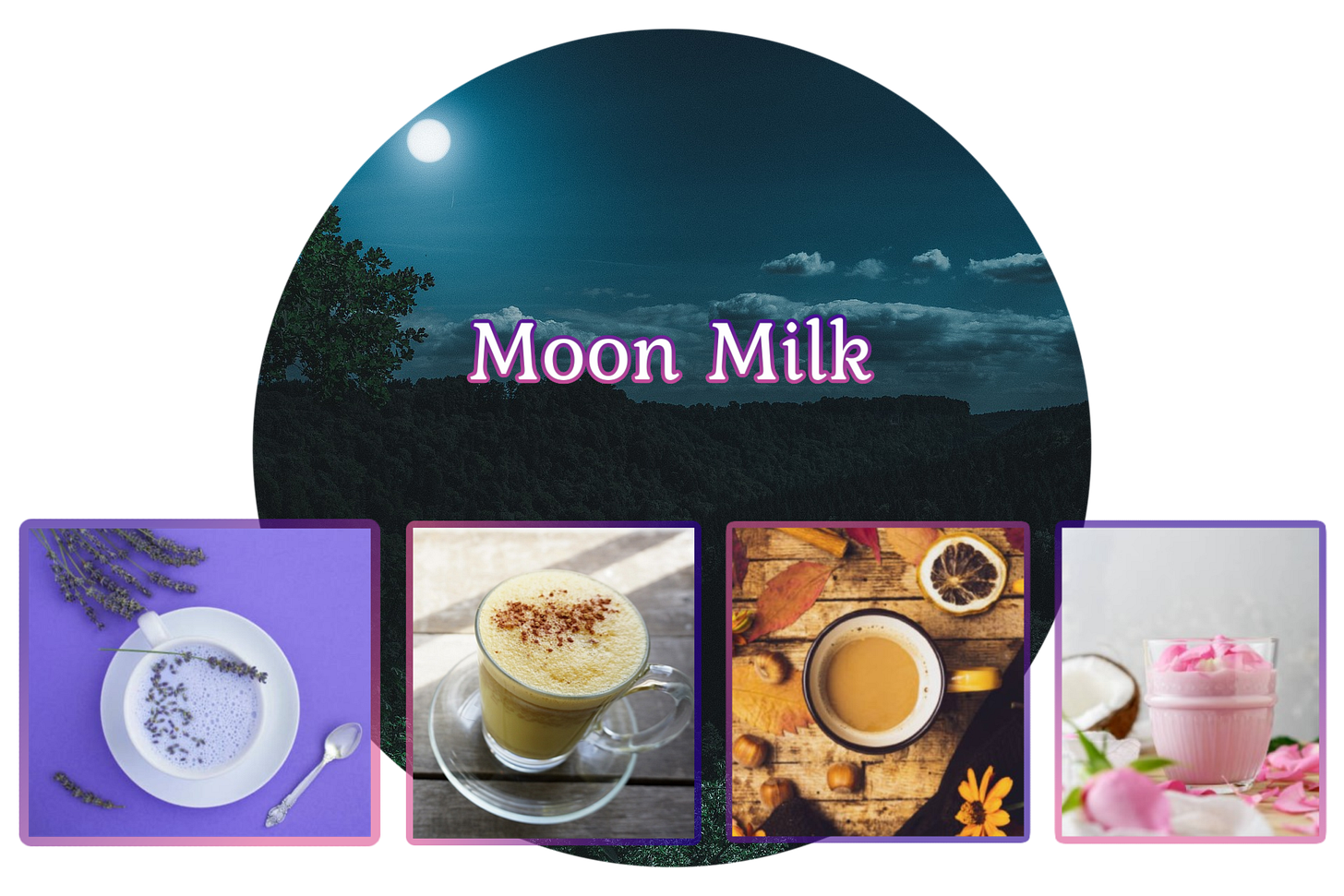Dream Deities
While you might choose your own patron/patroness of dreams, I’ve chosen the deities most known to be associated with dreams, along with some lesser-known entities to mix it up a bit. We will also be discussing ritual and how you can invoke or incubate dreams, using herbs/plants of your choice from the guide I’ve created.
We will also explore how you can create your own Dream Garden, using the guide and the information shared in Part One, as well as suggested beverages for encouraging a good night’s sleep and interesting dreams, but for now - let’s focus on the Deities.
The Oneiroi
In ancient Greek, Oneirori means ‘dreams’, and it includes a family of deities most noted for being associated with dreams (Morpheus), fantasy (Phantasus) and nightmares (Phobetor). The sons of Hypnos: the God of Sleep and Pasithea: the Goddess of Hallucinations, relaxation, etc., they were also known as “dark-winged” spirits who brought different kinds of dreams to humans.
Morpheus
The God of Dreams and the leader of the Oneiroi is the most well-known deity associated with dreams. Appearing in human form, Morpheus brought messages from the Gods to kings and he was also called the ‘fashioner’ due to his ability to project himself in any kind of humanoid variation.
Often depicted with wings, Morpheus was said to live in a cave with his father (Hypnos) and his brothers Phobetor and Phantasus on the island of Lemnos, by the river of oblivion and forgetfulness, called Lethe. When Morpheus leaves the cave with his brothers to bring dreams to humans, they pass through one of two gates.
One is made from horn and it’s the source of prophetic (true) dreams while the other is made from ivory, issuing dreams with no meaning (false). Some say that while Morpheus travels using his wings, his brothers transform into bats when taking flight.
Phobetor
Essentially the God of Nightmares, Phobetor (known as the ‘frightener’) appears as monsters and beasts, especially snakes, although snakes have attributes representing psychic power, sexuality and eternity.
Playing on the dreamer’s greatest fears (forcing them to face their fears – which can be a good thing!) Phobetor is also associated with the transition from dreams to reality, which is interesting to note for those (like myself) who deal with sleep paralysis. The word ‘phobia’ was inspired by his name.
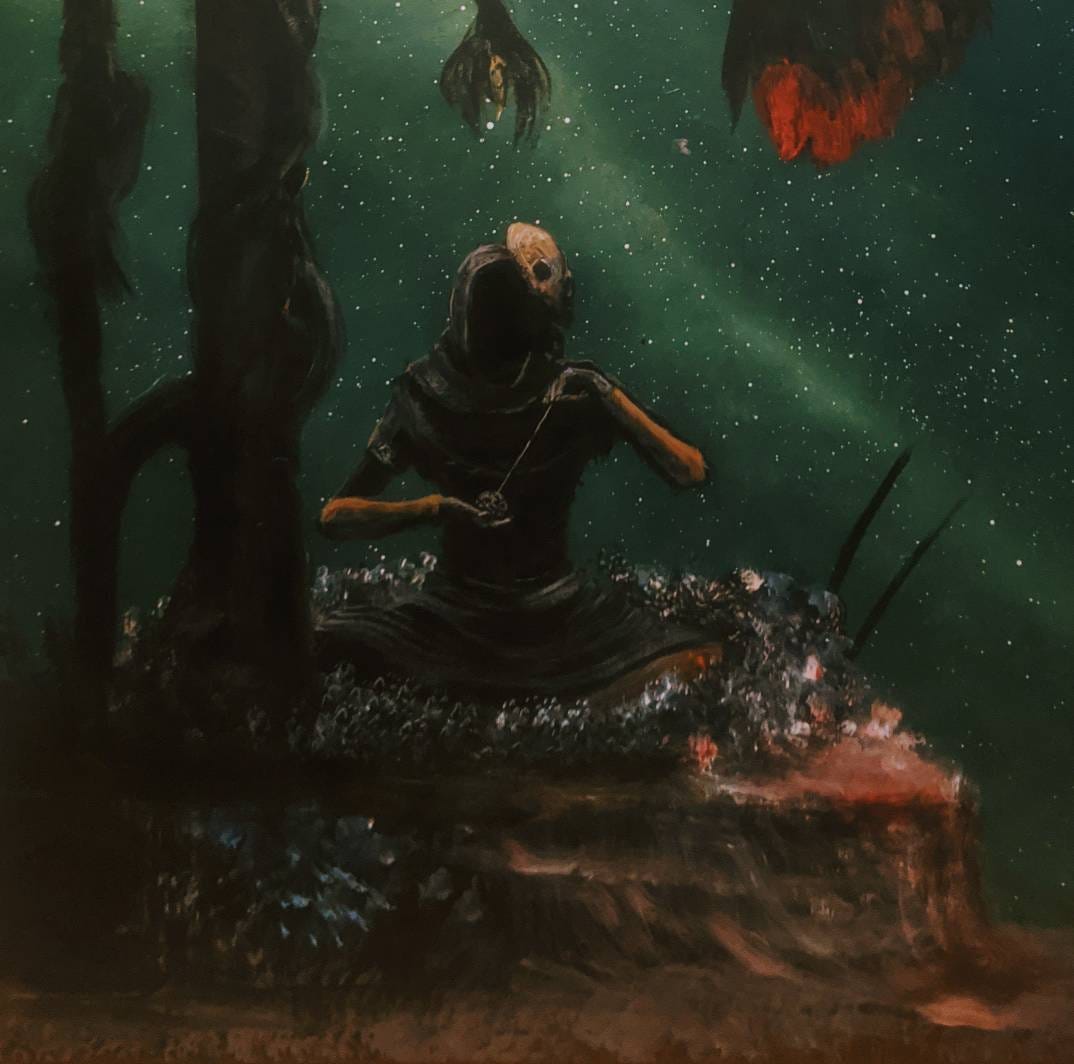
Phantasus
Also known as ‘Phantasos’, this deity governs unreal dreams; however, he represents inanimate objects as symbols, whether in nature or man-made. Phantasus also brings fantasy (a word derived from his name) and good dreams that can be surreal, which is opposite to Phobetor.
Sometimes he rules over confusing and cryptic dreams, that include puns and jokes. Often taking the form of a woman, Phantasus can appear as an apparition and on occasion the dreams he brings can be deceptive, especially if your question cannot be answered now.
Other Dream Deities
Sandman
A fairy tale by Hans Christian Anderson called Ole Lukøje (based on an old Scandinavian folk tale) is about a character also known as the Sandman. He relates the dreams he shared with a young boy, including his method of sprinkling magic dust into the eyes of children to bring them dreams.
If the children are good, he uses one of his two umbrellas to give them beautiful dreams, while the other is reserved for bad children, causing them to sleep without dreams. Anderson advises that the Sandman wears a silk coat that changes color as he moves. At the end of the tale, he reveals that he is a Dream God, while his brother (who has the same name) is the God of Death.
Bes
An ancient Egyptian God in possession of quite a few attributes, including war, protection of women and children, sexuality and fertility, the likeness of Bes was often carved into household items, as well as furniture and beds, where his image was said to protect people from evil spirits or ghosts.
After retrieving a blessed cloth from the temple, mothers would draw an image of Bes on their child’s left hand and then wrap it with the cloth to invoke pleasant dreams and chase away nightmares. Bes was also said to have inspired the Christian Devil’s appearance, but it serves as a reminder that looks can be deceiving and scary images are often used to scare away true evil.
Brėkšta
The Baltic Goddess of Twilight and Dreams, Brėkšta protects dreamers from dusk until dawn, keeping watch over the world from sunset to sunrise. She is said to be especially present in the early morning hours prior to dawn, when great dreams are more prevalent.
At sunrise, she hands the reigns over to the Goddess of the Sun (Saule), who rides on a chariot led by two horses. Brėkšta is a primeval Goddess who has governed the night since the beginning of time, and she has seen the dreams of all living beings.
Other deities to consider:
Nanshe: Sumerian Goddess of prophecy - helps interpret dreams
Chandra: Hindu Moon God
Idun: Scandinavian Goddess of Dreams and Divination
Dream Rituals
I’m going to keep it simple here, since doing a ritual before bed can awaken the senses and prevent you from being able to fall asleep straight away! That said, if you don’t mind doing a complex ritual, you can set up an altar by your bedside with candles, your herbs of choice and a prepared statement and invocation.
During the day, think about what you want to learn, what you want to dream about or what question you have that needs answering. This is a great way to program your mind in readiness for bedtime. When using the herbs/plants of your choice, there are a variety of ways to incorporate them in your ritual, such as:
Crafting a dream pillow or poppet stuffed with your herbs and a stone of choice
Placing a dream herb/plant that’s potted on your nightstand
Making a tea or beverage with herbs (non-poisonous, of course!)
Burn incense made with the herbs you’ve chosen
Use aromatherapy with a burner or inhaler
Place the herbs in a bowl or on a plate to sniff before bedtime
Put a few drops of lavender oil on your pillow
Anoint a white candle with Sandalwood oil and surround with herbs and gems
Dream Incubation
The following correspondences are suggestions, so feel free to use whatever suits you best. It all depends on your purpose and what you hope to achieve.
The Dream Garden
Whether you plan an extensive garden outdoors, an atrium or simple collection of potted plants, there are many ways to create a sacred space for growing a dream garden. It’s important to do your research, in terms of the growing conditions, spacing, if the plants are vigorous spreaders, if they’re poisonous and so on.
If you’re new to gardening or the propagation of plants (I like to start everything with organic seeds!) you might consider buying the plants and arranging them in a special place, whether indoors or outdoors.
Think of how you want it to look and draw a map, taking into consideration the various sizes of the plants and the aesthetics – for example: how you want it to feel when you look at it or what you want to evoke. You can also mix it up with plants in the ground and a few container plants.
A pond would be lovely, since water is the element of emotions and the subconscious, but it might be more economical and less time consuming to include an ornate bird bath. Surrounding the plants with relevant gemstones, shells and other corresponding items will give your dream garden a magical aura!
Dreamy Beverages
What better way to end the day than a warm, soothing cup of tea or moon milk to send you off into the dream world? From herbal tea to a hot chai or milky latte, you can choose the one that feels right on the night! Even a glass of mulled cider or spiced wine can be a delicious alternative, although alcohol can affect your dreaming mind.
Suggested Herbal Teas
Here are a few blends to get you started. You can keep it simple with a cup of Chamomile tea or you can create a concoction of your own choosing – providing they are safely prepared with non-poisonous herbs or ingredients that may affect any medications you’re taking. Sweeten with honey, maple syrup or stevia glycerite for an extra heavenly boost! Play around to see what suits your taste buds.
*Organic is best – to make sure you’re not taking in nasty pesticides and chemicals.
Black tea with Jasmine and Rose petals
Lavender and Hops
Chamomile and Valerian
Passionflower and Skullcap
Mimosa and Mugwort
Lemon Verbena and Honeysuckle
*Note: Mugwort is bitter and you should only use half a teaspoon
Moon Milks
While Moon Milks are a relatively new trend, people have enjoyed soothing warm milk drinks before bed for a long time, especially hot milk with nutmeg or cinnamon. Whether you enjoy Chai lattes or spiced milk, why not mix it up and include tasty herbs for an infusion that’s like sipping the dreamy, creamy moon?
All you need is warm milk, either regular or plant-based milks such as Coconut, Cashew, Oat, Almond or Soy. Then you can either add your herbs and spices and leave it to steep or warm the milk and herbs gently on the stove for a few minutes – watching carefully to make sure it doesn’t boil over.
*Note - it’s best not to microwave the brew since you want to keep the goodness.
Add a little sweetener (as mentioned above - if you like) and sprinkle with nutmeg, dried and crushed rose petals or other herbs for a special drink to put you in a magical mood - while meditating on your desired dreamy outcomes.
Here are some suggested blends:
Cinnamon, Nutmeg and Star Anise
Rose and Strawberry
Lavender and White Chocolate
Turmeric and Black Pepper
Jasmine and Hops
Passionflower and Valerian
Blackberry and Chocolate
*Note: I like to use powdered dried berries for their flavonoids and flavors, but you can blend them and swirl them into your milk too!
Alright - that’s the end of my 2 part series on A Garden of Dreams. I hope you enjoyed it! Even though I said this post would be for paid subscribers, I only have one (my cousin - Hi Georgia. Luv you!!!) So, if you’d like to subscribe or share this with your friends - please do!
I have to switch back to paid subscribers only for a while - with a free one here and there - so stay tuned!

